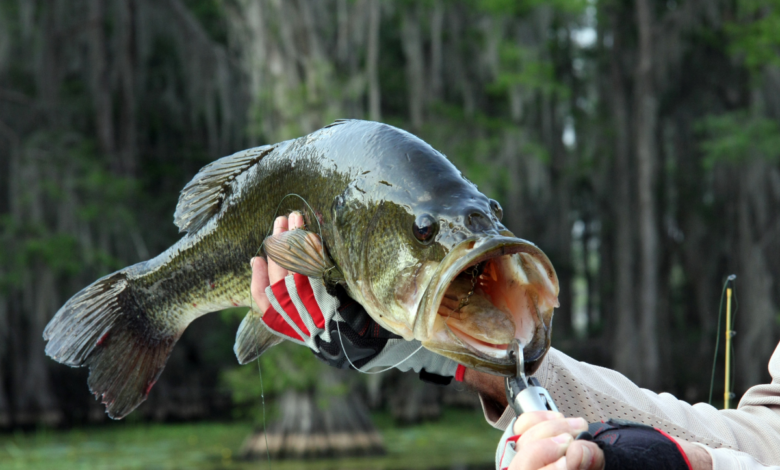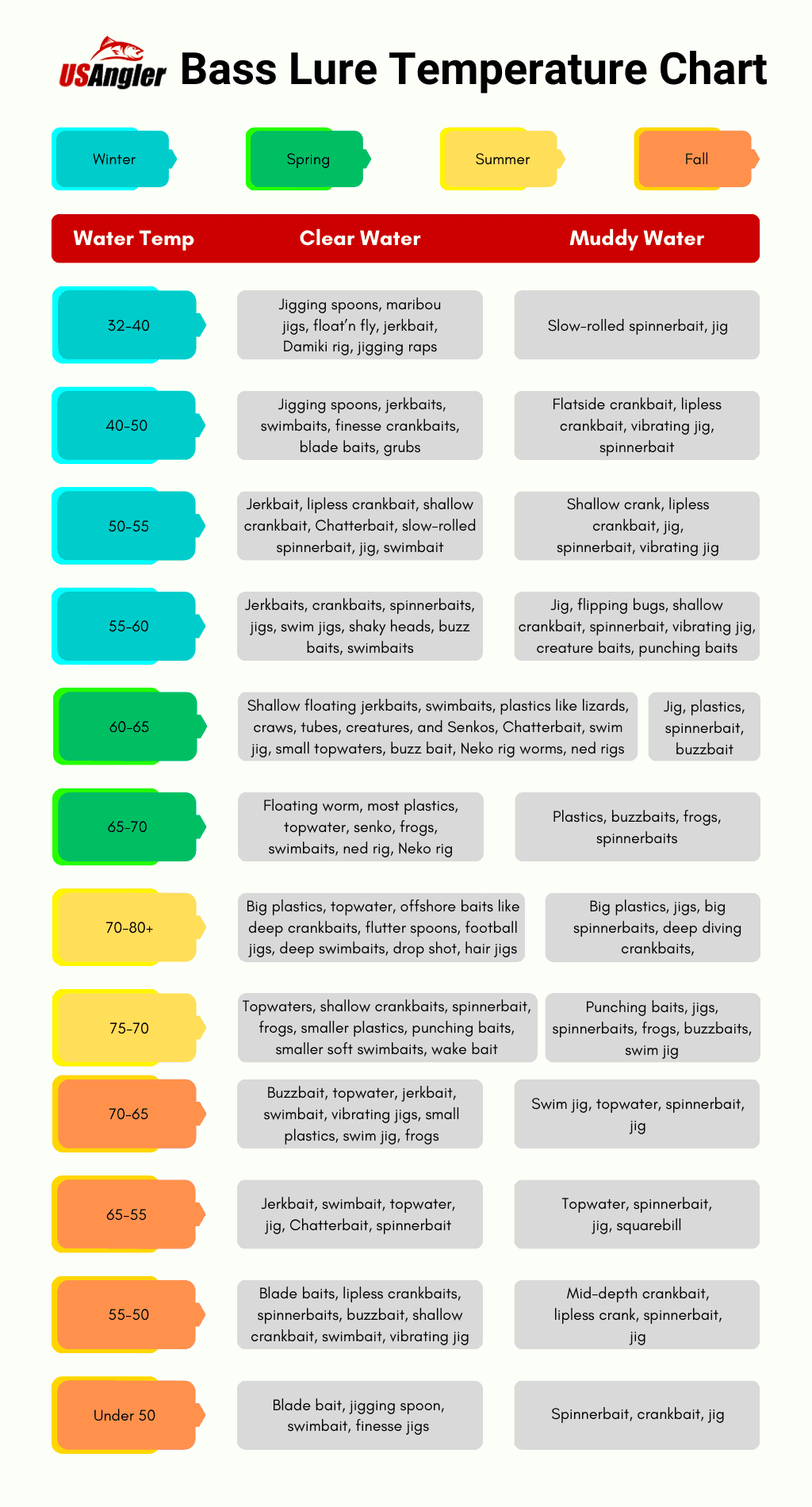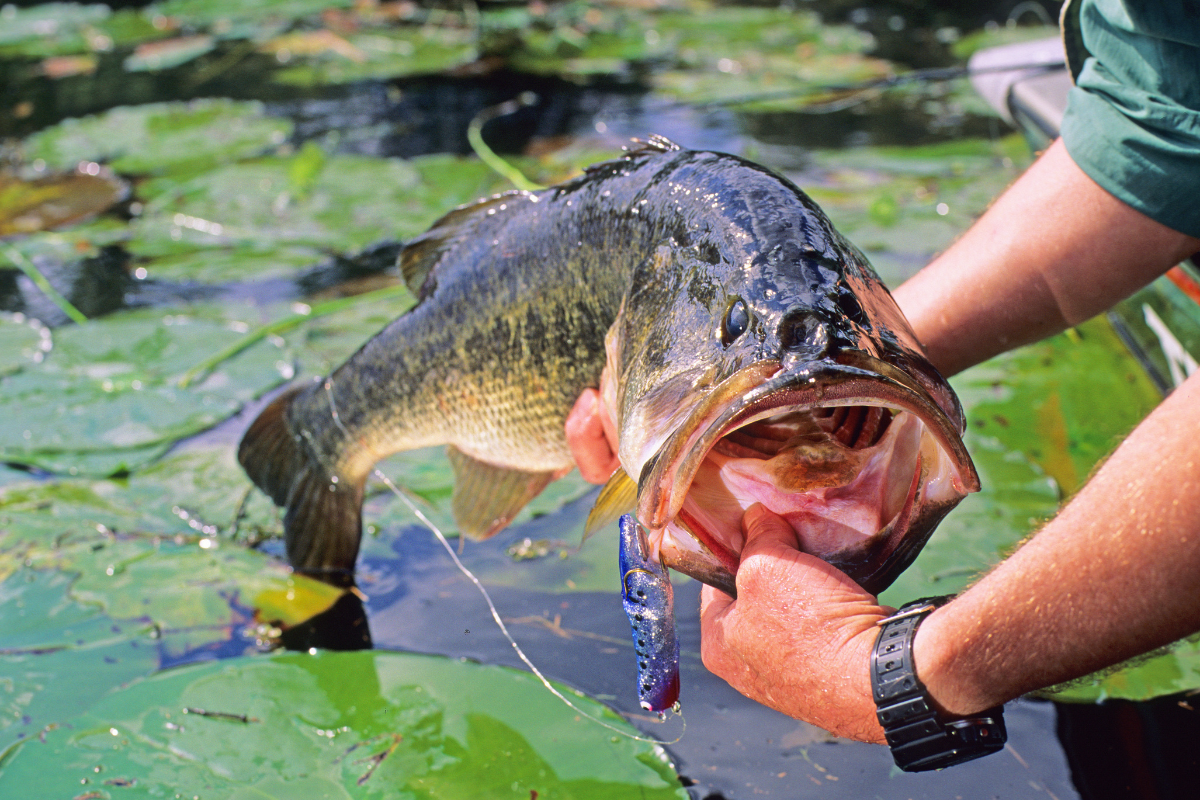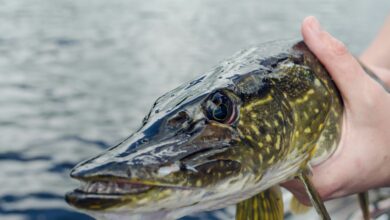Everything to Know About Summer Bass Fishing

You may have heard this a million times – the big bass stay hidden in deep water during the summer.
It is true, but only partially. Just as extreme summer heat can have a severe impact on our system, it has the same effect on the bass. But that is no reason to slow down your bass pursuits during summer.
As long as the temperatures are within the normal range, you can expect the summer bass to bite. Once it rises above a certain level it will affect bass behavior.
To understand how summer bass fishing works, let us dig deeper and learn the strategies that work best in summer.
Summer Bass Behavior
The thing is, early spring bass fishing strategies will not work in summer. Firstly, we need to understand how bass behaves in summer. Using that knowledge you can adapt your fishing techniques to match the fish’s behavior.
In summer, bass fish seek cooler temperatures just like we do. During peak summer, water temperatures can get really high, over 90 degrees. Bass fish don’t like these high temperatures because there’s not enough oxygen in the water for them.
However, high summer temperatures are less thermally stressful for bass than it is for other species like trout.
But that is not all…
At this time, the bass are in post-spawn mode. They are looking to recover and put on some weight. That means a lot of their attention is focused on aggressive feeding.
Since bluegill and shad spawn happens after the bass spawning season, there are plenty of feeding options for the bass in shallow water. Generally, after a short feeding session on baitfish, the bass go back to their cooling stations and conserve energy.
This pattern in bass behavior indicates two points anglers can use for bass fishing in summer. Choosing the right locations and the best time depending on the temperature.
Preferred Habitat
Don’t expect the bass to move in shallow waters when the sun is high in the sky during the day. They like shaded spots for hiding because it’s easier for them to sneak up on prey. These spots can be between 1 and 20 feet deep.
As the bass seek cooler waters, the larger fish move deeper. How deep they go depends on the nature of the water body, the water temperature variations, and food availability. Some largemouth prefer to hang around over the thermocline. This is a transition layer with hot water at the top and cold water below.
The smaller ones venture around deep ledges, brush, and rocks. They can also head towards windy shorelines where the wave action increases the oxygen content in the water. Areas with more aquatic plants that generate oxygen are other hot spots.

Water Temperature
We all know that bass becomes lethargic in summer. But they get lethargic in winter too. Have you wondered why?
Being cold-blooded creatures, the bass cannot regulate its body temperature. So its behavior is critically dependent on the temperature of the surrounding water. Studies have indicated that the most comfortable temperature range for bass is between 65 to 75 degrees Fahrenheit.
When the river water gets warmer, there’s less oxygen in it. This makes it hard for the fish to breathe. When the temperature gets really high, the bass gets stressed and slows down to save energy. They’re already tired from spawning. The most important thing for bass in these conditions is oxygen, but they still look for food.
In the case of extreme conditions, when temperatures can touch 100 degrees or more, the bass might stop biting. Usually, such situations do not last beyond a few days. In such a period, you can think of fishing in the night.
Now, when the water temperature drops in winter, the metabolism rate of the fish drops. They tend to get sluggish, and as oxygen consumption comes down, the feeding rate drops.
See the difference?
This is why, in winter you have to fish deeper and slower. But in summer, your style will depend on the time of the day and the movement pattern of the fish in the water body. If the weather gets cooler, the fish can start coming up.
For example, I have found overcast summer mornings to be great for summer bass fishing. With no direct sunlight, bass come out of their shady hideouts and tend to look around aggressively for food. To get a better idea about bass movements, carrying a thermometer to check the water’s surface temperature is a good idea.
How to Find Bass in the Summer
The equation is simple. In summer, 8 feet of deep water in the shade is cooler than 20 feet of deep water under the sun. So looking for bass in the shades is your best option.
Here are some areas where the bass is likely to bite in the summer.
Ledges and Drop Offs
Ledges and steep drop offs are great spots for finding summer bass. The drop in depth can vary from 20 feet to 5 feet and higher drop offs are the best points. These ledges make it easy for the bass to move into deeper waters when needed. Plus, the ledges can also provide a steady supply of crawfish and shad.
If you spot a creek channel intersecting with a river ledge, chances are that the bass are there. Such spots offer an intermixing of currents and also act as an in-and-out channel for the baitfish.
The real challenge is to find productive stretches among the miles of ledges on a river or a large lake. If you are heading for a bass fishing trip in Lake Erie or Lake Michigan, a map of the area can be useful to narrow down the search. A depth finder is another handy tool that you should carry along. The other option is to save your time and get help from a local fishing guide.
Current
Areas with a steady water current can be bass magnets in summer. The reason is, the current tends to add oxygen to the water and bring food. However, casting directly in the current is not a good idea. Bass does not move in the current for long periods as it takes too much energy.
In most cases, the bass is moving from eddy to eddy, where they either rest or look around for baitfish. Any change in the normal pattern of the river current is worth looking into. These can be a bend in the river, a large rock, or an eddy created by an inflowing creek.
A quick tip. For me, the scrounger was always a great wintertime presentation. But after a summer fishing trip in the Alabama River, I changed my opinion. By combining a scrounger with a small swimbait, you get an excellent shad imitator that works great in currents as well.
Dense and Floating Vegetation
Bass are known to hold to vegetation because it provides them with the cover they need to feel comfortable and safe.
The combination of a pre-spawn bass lure like a vibrating jig and a heavy-duty hook works well. I have missed a few strikes after casting on hydrilla mats, but the trick is to keep casting back without giving up.
Lily pads are another productive zone for post-spawn bass, even though it is hard to get the fish out of them. A hollow-body frog is a great topwater option in the morning. Later in the day, try using a Texas-rigged plastic worm with a small weight for the big bass lurking under the pads.

When to Fish for Bass in the Summer
No matter how strong their feeding needs are, bass do not feed constantly in summer. The hours during dawn and dusk are its favorite feeding times. Usually, bass feeds twice a day and at the same time. But, this pattern can be affected by factors like storms, or the appearance of schools of baitfish.
That said, you do not need to find out the exact feeding time of the bass to make them bite. The good news is, that bass have an instinctive attack reaction that can make them strike out at the bait anytime. The key is to get your presentation right.
In the early hours, topwater baits are some of the best options. Skirted jigs, topwater frogs, and jigs work very well for me in such situations. While fishing for bass from the shore in the early mornings, using a spinner bait is another effective option.
If your busy schedule makes you miss the two golden periods of morning and evening, do not lose hope. One of the best ways of locating bass during the day is by looking for them in the shadows. Be it a structure, vegetation, or rocks, anything that offers shielding from the sun can be a good hanging spot for the bass.
I have noted that bass tends to be more selective when water temperatures are high. So matching your bait with the local prey species is a good idea. While fishing on a hot day, I slow the retrieve and keep the bait in the strike zone for longer periods. Since the bass will be lethargic at this point, a slow retrieve is more effective.
Summer Bass Fishing: FAQs
What are the best types of lures to use when fishing for bass in the summer?
Topwater baits work great for hot weather bass fishing during the early hours. Other than that, you can use plastic worms, soft plastic stickbaits, and tubebaits. Lipless crankbaits and spinnerbaits work well too.
Are summer bass smaller than usual?
Smaller bass are readily found in summer, especially in shallow waters, as they are more tolerant to high water temperatures. Usually, the big bass may have moved to the cooler, deeper waters.
Are bass shallow or deep in the summer?
The number of bass in shallow water comes down during the peak of summer as the fish prefer cooler waters. Even so, if there is shade and the hunting pressure is less, you will find bass looking for food in shallow waters.
Final Thoughts
For me, the trick of successful summertime bass fishing is understanding their movement pattern. No matter the season, know that bass behavior is predictable. With water temperature dictating their movement, you can expect them to move towards cooler waters
Other factors can affect bass behavior in summer as well. So, make sure to gather real-time information about the fishing location before you head out.




One Comment